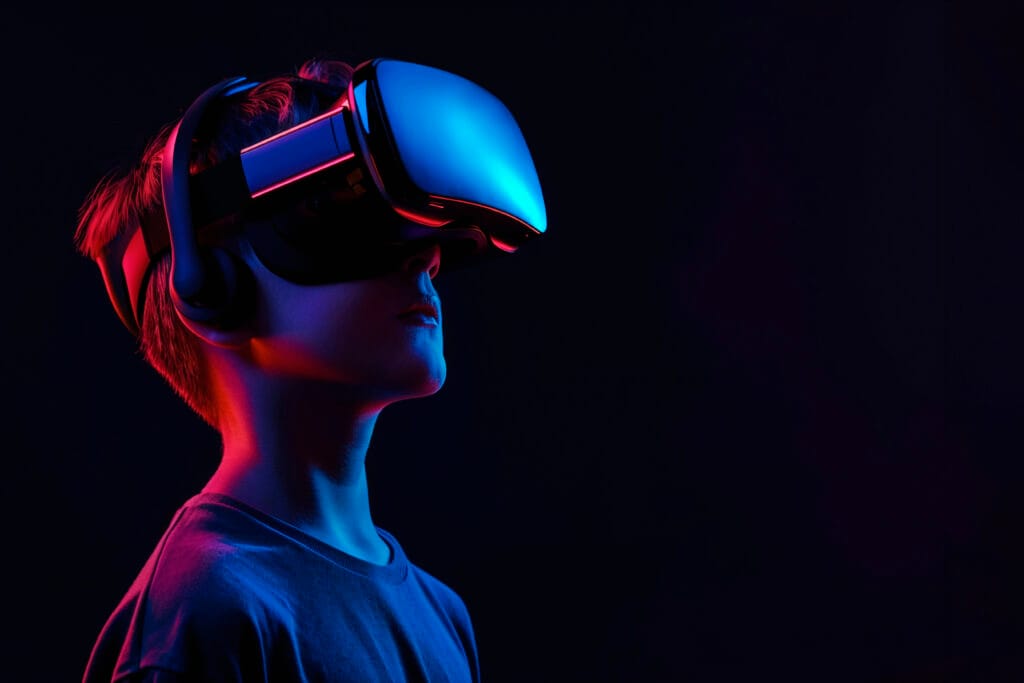Augmented Reality (AR) and Virtual Reality (VR) technologies are transforming industries ranging from gaming and entertainment to defense, education, and healthcare.
As immersive experiences evolve, the demand for real-time rendering, low latency, and high processing power continues to rise.
This is where Field-Programmable Gate Arrays are emerging as a powerful solution, enabling real-time AR/VR experiences at the edge with superior performance and energy efficiency.

The Need for Real-Time Processing in AR/VR
AR and VR systems rely heavily on the ability to process and render data instantaneously. In applications like virtual training, remote surgery, or autonomous vehicle simulations, even a slight delay can disrupt user experience or compromise safety.
Traditional processors such as CPUs and GPUs, though powerful, often struggle with balancing real-time responsiveness, power efficiency, and flexibility especially in edge environments.
With their parallel processing capabilities and reconfigurable architecture, overcome these challenges by delivering deterministic performance and ultra-low latency, making them ideal for AR/VR workloads.

Why FPGAs Are Ideal for AR/VR Systems
These combine hardware-level acceleration with software-like flexibility, offering several advantages that make them particularly suited for immersive computing environments.
Parallel Processing for Real-Time Rendering: They can perform multiple tasks simultaneously, such as motion tracking, image stitching, and depth sensing. This parallelism helps achieve seamless rendering of complex 3D graphics in real-time crucial for reducing motion-to-photon latency.
Low Latency and Deterministic Performance: Unlike GPUs that operate on predefined instruction sets, these execute tasks directly in hardware. This reduces latency dramatically, ensuring that head movements, gestures, or interactions are rendered instantly, enhancing user immersion.
Customizable Architecture: They can be reprogrammed to accommodate evolving AR/VR algorithms and protocols. This adaptability allows developers to optimize performance for specific use cases be it in gaming, industrial simulation, or defense visualization.
Energy Efficiency at the Edge: AR/VR devices deployed at the edge such as wearable headsets or remote monitoring systems demand power-efficient designs. FPGA-based accelerators consume significantly less power than GPUs while maintaining comparable performance, extending device runtime and reducing cooling needs.

Applications of FPGA in AR/VR Systems
The versatility of FPGAs enables their integration across various AR/VR applications that require high throughput and responsiveness.
Immersive Gaming and Entertainment: They can accelerate image processing, real-time physics simulation, and 3D rendering, resulting in more responsive and lifelike gaming experiences. Their low latency ensures a smooth user experience without motion sickness.
Industrial Training and Simulation: In sectors such as aviation, manufacturing, and defense, FPGA-powered AR/VR systems offer realistic simulations with real-time environmental feedback, helping trainees experience real-world scenarios in a controlled environment.
Healthcare and Telemedicine: FPGA-enabled AR/VR platforms are increasingly being used in remote surgeries and rehabilitation. Their ability to process high-resolution video streams in real-time supports precise, delay-free visualization.
Smart Glasses and Wearable Devices: Lightweight and power-efficient FPGAs are ideal for edge-based wearables, enabling on-device image recognition, gesture control, and environmental mapping without constant cloud dependency.

FPGA Integration with Edge Computing for AR/VR
As AR/VR applications migrate toward edge computing architectures, the synergy between FPGAs and the edge becomes even more critical.
Edge servers equipped with FPGAs can offload computationally intensive rendering tasks from head-mounted devices, reducing latency and bandwidth requirements.
By processing visual data locally rather than in distant cloud servers, FPGA-enabled edge nodes enable faster responses and maintain privacy, which is essential in industrial or defense-related AR/VR applications.

FPGA-Based AR/VR System Architecture
A typical FPGA-enabled AR/VR setup integrates several functional blocks optimized for real-time performance:
Sensor Input Interface: Captures data from cameras, IMUs, LiDAR, and other sensors.
Preprocessing Unit: Handles noise reduction, feature extraction, and motion estimation.
Rendering Engine: Uses FPGA fabric for real-time 3D rendering and image fusion.
Edge Inference Engine: Executes AI-based object detection and scene analysis locally.
Display Controller: Outputs processed visuals to headsets or smart glasses with minimal delay.
Such modular FPGA designs allow system architects to fine-tune latency, throughput, and power efficiency according to the application’s specific demands.

Challenges and Future Directions
While they offer immense potential for AR/VR systems, there are still some challenges:
Development Complexity: Designing these solutions requires expertise in HDL languages like VHDL or Verilog, though high-level synthesis (HLS) tools are easing this process.
Cost Considerations: FPGA hardware can be more expensive initially than standard processors, though the long-term benefits of flexibility and performance often outweigh the costs.
Integration with AI Workloads: As AR/VR increasingly depends on AI-driven vision algorithms, FPGA developers must ensure efficient mapping of neural network models to hardware.
Future trends point toward heterogeneous computing platforms, where FPGAs collaborate with CPUs and GPUs to balance flexibility, performance, and scalability.
Additionally, advancements in adaptive SoC-based FPGAs such as those from Xilinx Versal or Intel Agilex are paving the way for smarter, faster AR/VR systems that can dynamically optimize workloads.

Conclusion
As immersive technologies continue to push the boundaries of real-time interactivity, FPGAs are becoming an essential enabler of AR/VR innovation.
Their ability to combine ultra-low latency, parallel processing, and power efficiency makes them ideal for edge-based applications where responsiveness and performance are paramount.
From next-generation gaming to industrial training and healthcare solutions, FPGA-enabled AR/VR systems are shaping the future of immersive experiences bringing high-speed intelligence closer to the user, right at the edge.



![What is FPGA Introduction to FPGA Basics [2023] computer-chip-dark-background-with-word-intel-it](https://fpgainsights.com/wp-content/uploads/2023/06/computer-chip-dark-background-with-word-intel-it-300x171.jpg)








